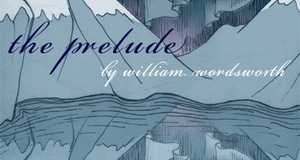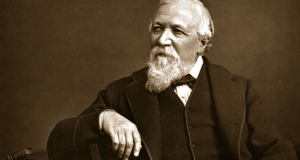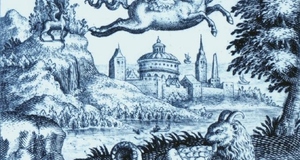Wordsworth's Tintern Abbey: Conveying Experience Through Nature
By
2015, Vol. 7 No. 09 | pg. 1/2 | » AbstractWordsworth’s “Tintern Abbey” takes on an abundance of ideas regarding nature’s ability to preserve one’s memories as well as past and present perceptions. Wordsworth conveys his experiences with nature to readers through his poem using vibrant imagery, a narrative-like structure and abstract metaphors. A further look into the poem will provide support for the pervasive affect of Wordsworth’s written work to evoke sentiments from readers. “Tintern Abbey,” by William Wordsworth, is a poem that concentrates on a single moment in a natural environment yet extracts a multitude of sensations and perceptions that are able to impact the minds of readers across centuries. As readers, we obtain a first person perspective of the abbey’s ruins and the way that Wordsworth interprets the environment’s change in appearance since he last visited the abbey five years prior. He describes what is and what was, and how the comprehension of this change has inspired a course of reflection that takes Wordsworth along a stream of thoughts about regret, present awareness and introspection, concluding with hope for the future. His sister Dorothy also is present as another physical being that Wordsworth is able to look to in order to draw further ideas about the impressions gained from gazing out upon the natural world. Despite the lack of physical action or movement within the piece, the progression of Wordsworth’s mental fluctuations and experiences are used in order to trigger the senses of readers as they embark upon a journey exposing nature’s regenerative effects.Published in the 1798 Preface to Lyrical Ballads, Wordsworth’s “Tintern Abbey” has been a mode of conveying feelings through scenes of serene natural imagery. Detailed depictions of the environment present the reader with an illustration of the abbey that seems to leap off of the page and be recreated within the mind’s eye. Wordsworth’s “Tintern Abbey” utilizes detailed imagery, a narrative-like form, and abstract metaphors in order to transform a subjective, personal experience into a relatable interaction with the natural world. The use of detailed imagery within “Tintern Abbey” provides a sturdy ground for readers to stand upon in order to effectively comprehend the subtle sentiments evoked from Wordsworth’s environment. The articulation of the environment Wordsworth finds himself in is a primary method of communication his ideas to readers. Wordsworth would be unable to reveal the enhanced ability to look inward at his thoughts and emotions without the detail and precise illustrations of the landscape within which he is situated. His intent is to draw the audience closer to his own perceptions by recreating the scene in their minds. The following lines from the poem reaffirm the poet’s substantial attention to detailed imagery, Once again I see The articulation of the hedge-rows, the color of the forest floor and smoke that drifts upwards from the trees has a silencing and peaceful effect on the mind. Encapsulated within the vivid portrayal of the scene is a concentration on the picturesque beauty of the environment. The senses are amplified by these precise illustrations such as the lucid imagery of “pastoral farms” surrounded by a field of green, which gives way to a powerful sense of sight and a type of peaceful comfort in nature. This affect occurs despite the lack of knowledge the reader might have of the physical setting. Silence is an important aspect of the environment that Wordsworth notes within the lines above. The silence signifies the absence of interaction with the environment beyond what the eyes sense and what the mind interprets. The action takes place within Wordsworth’s imagination as he inhales the abundance of elegance that is emitted from the organic setting. The line prior to his description of the scene begins, “Once again I see.” This affirmation of understanding is supported in the lines to follow where it is clear that the environment allows him to once again be moved by the beauty he is able to extract from the quiet allure of nature. The idea of keeping one’s attention within a present moment is similar to what Wordsworth experiences in returning to the abbey. He loses the ability to perceive the abbey in the way that he did in the past, allowing him to only manipulate his present perceptions of the environment and imagine future comforts, And now, with gleams of half-extinguished though[t,] These “half-extinguished thoughts” are the fading memories of his past visit to Tintern Abbey, which he reveals he is sad to let go of. This “sad perplexity” is comforted by his ability to revive prior senses of pleasure in the environment. From this point he moves forward suggesting that if he is capable of redesigning the “pleasing thoughts” he once felt, there is hope to do so in the future. This recognition of present purpose provides nourishment necessary for thriving in the future. The long stanzas within the poem draw the reader’s attention away from prior stanzas and relay that progressing forward is more crucial in order to derive meaning. Just as Wordsworth extracts a multitude of sensatory perception and awareness from a single moment, he beckons readers to invest themselves into the process of his interpretation. Realizing the forward movement of Wordsworth’s thoughts and reactions allows the reader to glimpse a moment of reflection where the current expressions of ideas builds upon prior descriptions and allows a deeper understanding the farther one reads down the page. These stanza’s therefore seem to represent different moments and stages in Wordsworth’s interpretation, each one tackling a new concept that grows out of ideas from the prior stanza. The natural world serves as a tool for Wordsworth to comprehend beauty and it’s ability to impact the human senses. David Miall discusses the importance of the environment and the self-reflection that is gained from the admiration of natural beauty. In the following lines Miall recognizes the importance of nature in the transmission of feeling to a reader, “The forms of landscape that constitute the scene of the poem make it powerfully iconic, a vehicle for self-understanding that Wordsworth appears to find unique” (Miall, 3). Miall recognizes the influence of the natural setting within “Tintern Abbey” and how it is used in order to convey the “self-understanding” that Wordsworth gains from reminiscing over the abbey’s ruins. This self-understanding represents Wordsworth’s ability to understand the change in his perceptions of the environment. This self-understanding is also meant to grant Wordsworth his “unique” interpretation of memory as well as past and present sensations he receives from the beauty of the landscape. Imagery composes the tone of peaceful grandeur, yet it is the accompaniment of Wordsworth’s subjective mind that initiates the newfound experience gained from revisiting the environment. In an article entitled “The Contrarieties: Wordsworth's Dualistic Imagery,” Charles Smith explains how the permanent aesthetic of the scene is given meaning from the mutability of change within Wordsworth’s mind. Smith notes, “This situation is fraught with implications of Permanence and Mutability. The scene itself has changed little or not at all and forms the underlying principle of Permanence. The poet, however, has changed a great deal (Mutability)” (Smith, 1184). Imagery paired with interpretation becomes an aspect of crucial importance in order for Wordsworth to maintain the connection between what he witnesses and his inner feelings and emotions. This permanence in nature that Smith recognizes contributes to the substantial change that Wordsworth experiences. This change constitutes a close examination of his new and refreshed analysis of nature’s emotion evoking qualities. The way Wordsworth’s mind adapts to his own personal growth in character is emphasized in his ability to create an original interpretation of the setting despite its consistency in appearance. Through physical depictions of the images Wordsworth sees, he is able to explain the power of an abstract measurement of life, time. It is essential for Wordsworth to illustrate the scene so that the impact of five years past provides the reader with the way the mind is altered through time and perceptions can be changed as one enters new stages of their life. The abstract nature of time is also realized as a major factor contributing to the growth and adaptation of one’s imagination as their physical form changes but nature remains relatively preserved. Time plays a role in realizing the ephemeral aspect of humanity. Author John Peters regards time to be of crucial importance for substantiating meaning from life as he states, “For Wordsworth, time is a necessary part of the human experience, and in the progression of time in human existence we find beauty and truth and meaning and ultimately-joy” (Peters). This reality is shown in the work through the importance that is placed on the ability for one’s interpretations to change. The change suggests that mutability is a powerful force capable of stimulating one’s senses therefore allowing them to access the beauty in life as long as one’s imagination can seek it out.Continued on Next Page » Suggested Reading from Inquiries Journal
Inquiries Journal provides undergraduate and graduate students around the world a platform for the wide dissemination of academic work over a range of core disciplines. Representing the work of students from hundreds of institutions around the globe, Inquiries Journal's large database of academic articles is completely free. Learn more | Blog | Submit Latest in Literature |


















